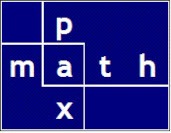Comparison of Strategies Link
https://medium.com/swlh/simulate-the-monty-hall-problem-using-python-7b76b943640e
Thanks for the great post !
look at the STRATEGY of NEVER switching
Never switching choices:
Probability of Winning = 1/3
Probability of Losing = 2/3
look at the STRATEGY of ALWAYS switching
The prize is behind #2
Scenario #1: You choose door #1 — Host opens #3 — You switch to #2 — WIN !
Scenario #2: You choose door #2 — Host opens #3 or #1 — You switch to #1 or #3 — LOSE
Scenario #3: You choose door #3 — Host opens #1 — You switch to #2 — WIN !
Switching choices:
Probability of Winning = 2/3
Probability of Losing = 1/3
Much better chances
look at a fictional scenario where there are 100 doors
… you choose one of the doors randomly. Your chance of choosing the door with the prize is 1 / 100 which is 1%. The host then reveals to you 98 other doors that contain a goat leaving just your first choice and one other unopened door, so we know one of them contains the prize and the other contains the goat.
Do you still think, given this scenario that you have only a 50% chance of winning by switching or not switching since there are two unrevealed doors left ?
There’s a website that presents a Monty Hall simulation; it keeps score for staying and switching. It has a manual and an automatic mode. In the manual mode, you can mix strategies while you play; the score is kept for each strategy.
They say experience is the best teacher.
Simulator Link
https://www.mathwarehouse.com/monty-hall-simulation-online/
And how about the tree approach ?
I find it substantial, convincing, and artistic.

Tree Link
https://probabilityandstats.wordpress.com/2017/05/11/monty-hall-problem/



“A person must start with a willingness to learn and follow it with long, hard study. I grok that is salutary.”
— Robert Heinlein